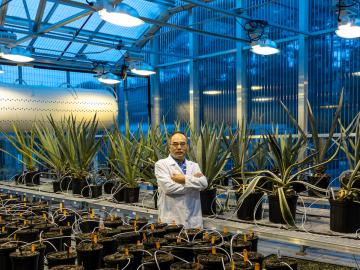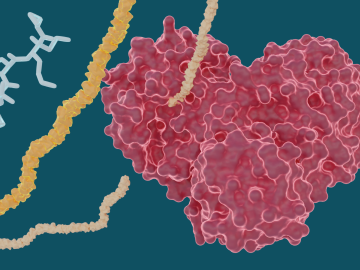
Filter News
Area of Research
- (-) Biology and Environment (39)
- (-) Computational Engineering (1)
- (-) Nuclear Science and Technology (28)
- Advanced Manufacturing (5)
- Biology and Soft Matter (1)
- Computational Biology (1)
- Computer Science (9)
- Electricity and Smart Grid (3)
- Energy Frontier Research Centers (1)
- Energy Science (142)
- Functional Materials for Energy (1)
- Fusion and Fission (30)
- Fusion Energy (17)
- Isotope Development and Production (1)
- Isotopes (4)
- Materials (102)
- Materials for Computing (17)
- National Security (27)
- Neutron Science (127)
- Nuclear Systems Modeling, Simulation and Validation (1)
- Quantum information Science (9)
- Sensors and Controls (1)
- Supercomputing (68)
- Transportation Systems (2)
News Topics
- (-) Advanced Reactors (12)
- (-) Fusion (9)
- (-) Grid (3)
- (-) Machine Learning (10)
- (-) Nanotechnology (7)
- (-) Neutron Science (9)
- (-) Space Exploration (5)
- (-) Transportation (3)
- 3-D Printing/Advanced Manufacturing (15)
- Artificial Intelligence (10)
- Big Data (11)
- Bioenergy (47)
- Biology (74)
- Biomedical (19)
- Biotechnology (14)
- Buildings (2)
- Chemical Sciences (12)
- Clean Water (12)
- Composites (5)
- Computer Science (24)
- Coronavirus (14)
- Critical Materials (1)
- Cybersecurity (2)
- Energy Storage (7)
- Environment (93)
- Exascale Computing (4)
- Frontier (3)
- High-Performance Computing (21)
- Hydropower (8)
- Isotopes (7)
- Materials (12)
- Materials Science (9)
- Mathematics (5)
- Mercury (7)
- Microscopy (10)
- Molten Salt (5)
- National Security (3)
- Nuclear Energy (37)
- Partnerships (6)
- Physics (4)
- Polymers (2)
- Security (2)
- Simulation (15)
- Summit (11)
Media Contacts

A team of scientists led by the Department of Energy’s Oak Ridge National Laboratory and the Georgia Institute of Technology is using supercomputing and revolutionary deep learning tools to predict the structures and roles of thousands of proteins with unknown functions.

Ten scientists from the Department of Energy’s Oak Ridge National Laboratory are among the world’s most highly cited researchers, according to a bibliometric analysis conducted by the scientific publication analytics firm Clarivate.

Scientists at ORNL have discovered a single gene that simultaneously boosts plant growth and tolerance for stresses such as drought and salt, all while tackling the root cause of climate change by enabling plants to pull more carbon dioxide from the atmosphere.

The Department of Energy’s Office of Science has selected five Oak Ridge National Laboratory scientists for Early Career Research Program awards.

Six scientists at the Department of Energy’s Oak Ridge National Laboratory were named Battelle Distinguished Inventors, in recognition of obtaining 14 or more patents during their careers at the lab.

The annual Director's Awards recognized four individuals and teams including awards for leadership in quantum simulation development and application on high-performance computing platforms, and revolutionary advancements in the area of microbial

Seven ORNL scientists have been named among the 2020 Highly Cited Researchers list, according to Clarivate, a data analytics firm that specializes in scientific and academic research.

Experiments led by researchers at ORNL have determined that several hepatitis C drugs can inhibit the SARS-CoV-2 main protease, a crucial protein enzyme that enables the novel coronavirus to reproduce.

The combination of bioenergy with carbon capture and storage could cost-effectively sequester hundreds of millions of metric tons per year of carbon dioxide in the United States, making it a competitive solution for carbon management, according to a new analysis by ORNL scientists.

Radioactive isotopes power some of NASA’s best-known spacecraft. But predicting how radiation emitted from these isotopes might affect nearby materials is tricky


